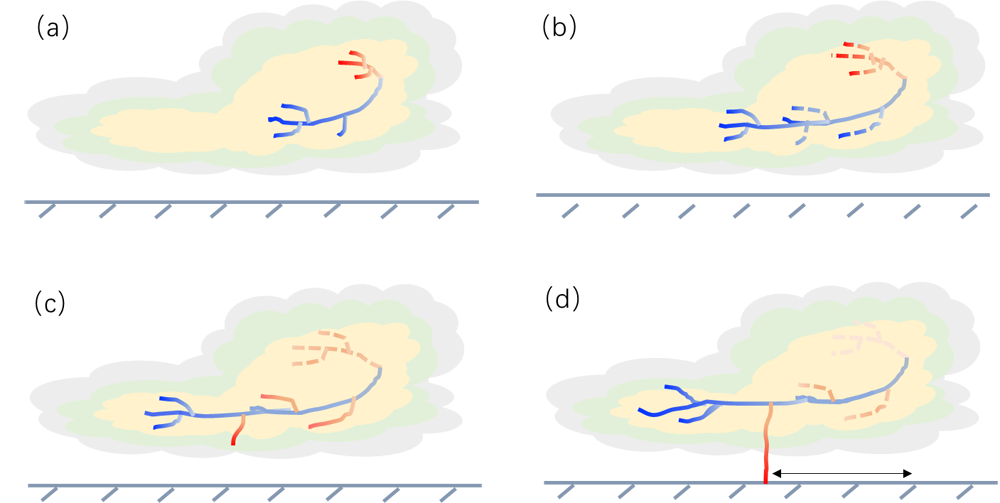A bolt of cloud-to-ground (CG) lightning forms if a lightning leader develops out of the cloud and reaches the ground. Positive CG lightning is formed by a downward positive leader and transfers positive charge into the ground.
The occurrence of a +CG lightning can cause severe damage to the object it hits. In addition, it induces red sprites at 40-90 km above the ground or triggers upward lightning from tall buildings on the ground sometimes.
The horizontal distance between the initiation region and the ground point of positive CG lightning can reach tens of kilometers. A positive leader could not propagate so far in hundreds of milliseconds with its typical speed, so how does such positive ground lightning strike the area so far away from its origin?
Recently, researchers from the Institute of Atmospheric Physics (IAP) at the Chinese Academy of Sciences, provided evidence of how this kind of positive CG lightning occurred.
"We find two kinds of side discharges from the active negative leaders in a +CG lightning flash. First, some km-long negative leader branches get reactivated. Such reactivations can promote the propagation of the advancing negative leader." said the first author YUAN Shanfeng, a Post Doc working at the IAP. "Second, the new positive leader can initiate from the bright negative channel to propagate downward and contact the ground to form positive ground lightning."
"In such a scenario, the downward positive leader emerged from the horizontally propagating negative leader," said the corresponding author JIANG Rubin, an associate professor from the IAP. "We know the speed of negative leaders is nearly an order faster than positive leaders so that the strike point can be much further from the origin than normal positive ground lightning."
This work, published in
Geophysical Research Letters, reveals a more complicated dynamics of natural lightning leaders. During sustained lightning leader propagation, the older channel or branches will disconnect from the main channel. Therefore, side discharges should be a typical process for natural lightning and deserve researches in advance.
Figure 1. Conceptual model of side discharges from the negative leader and the formation of +CG lightning. (Image by YUAN Shanfeng)
Citation: Yuan, S., Jiang, R., Qie, X., & Wang, D. (2021). Side Discharges From the Active Negative Leaders in a Positive Cloud‐To‐Ground Lightning Flash. Geophysical Research Letters, 48, e2021GL094127. https://doi.org/10.1029/2021GL094127
Media contact: Ms. LIN Zheng, jennylin@mail.iap.ac.cn

